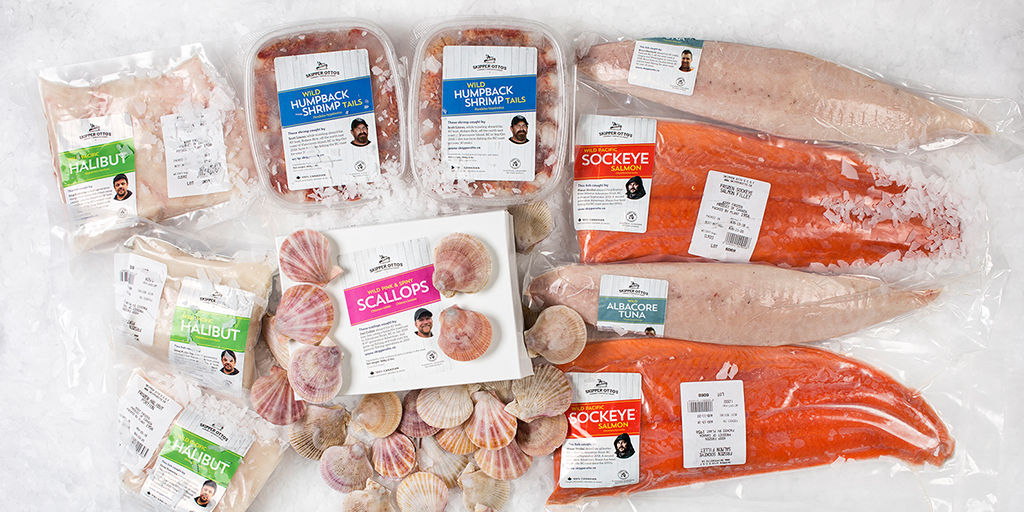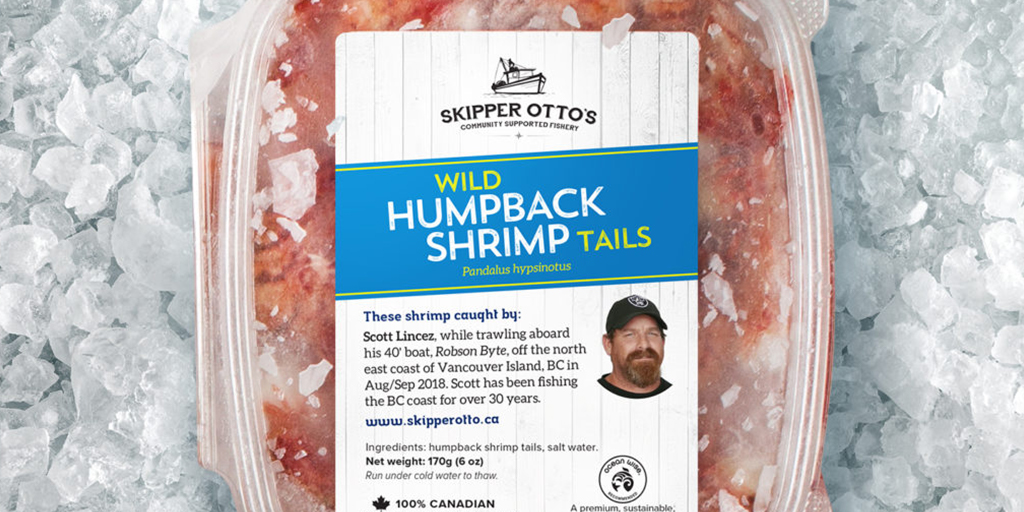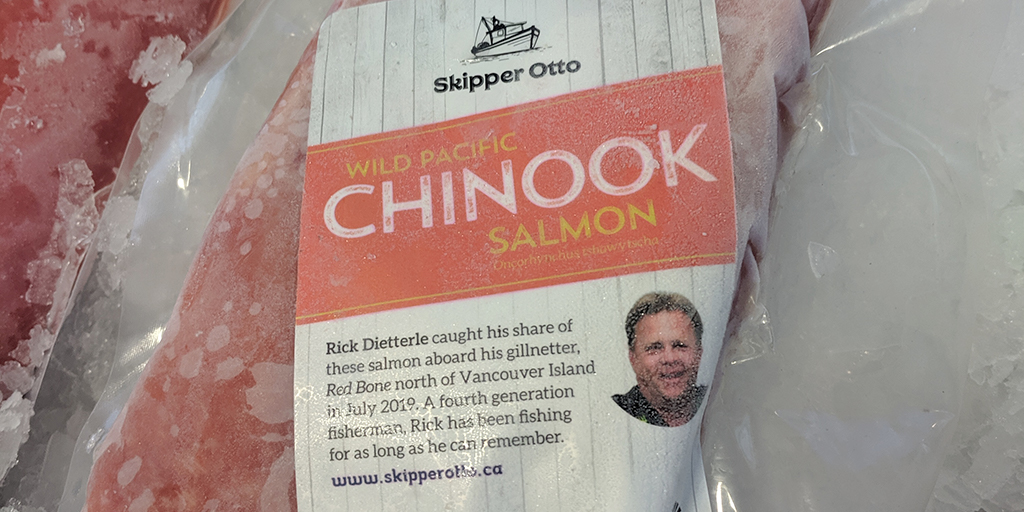Many people find seafood intimidating, from fears of overcooking, to the belief it has to be complicated, to the most common concern: how to safely handle and store your seafood. If you’re worried about storing and handling your seafood safely, check out these simple guidelines and you’ll feel like a seafood superstar in no time! Read on for some answers to common questions on the best way to handle and store your seafood.
What Temperature Should I Keep My Seafood At?
To ensure your sustainable seafood stays as fresh as possible, you should always store it below 4°C, and if it is frozen, it should remain frozen until you’re ready to prepare it. When your seafood is caught by our fishing families, it is individually slid into a slurry of flaked sea ice and water or is flash-frozen immediately at sea. Our seafood is then transported and stored in carefully maintained, temperature-controlled environments to make sure that the seafood remains at an optimal temperature until it gets to our members! If your seafood comes above 4°C, it will develop a tell-tale ‘fishy’ smell or taste. This is a problem you often find in the industrial seafood system, where fish can be left lying in the sun for hours or even days, only to be put back in the cooler, with wholesalers, retailers, chefs and consumers having no way of knowing what happened to their seafood on its long journey from boat to fork.

How Long Can Seafood Stay in My Freezer?
Professionally sealed and flash-frozen seafood, like our Skipper Otto seafood, lasts much longer than seafood that is frozen in a residential freezer (and has much better taste, quality, and consistency, which you can read about here.) Our flash-frozen seafood will have the best taste if you eat it between 3-9 months after receiving it, although it will be safe to eat much longer than that, provided it is never allowed to thaw out (it just begins to dry out a bit after that). Check out species-specific freezing notes below!
Frozen Salmon
Out of the 5 species on the BC coast, sockeye salmon will retain its quality longest in the freezer, as its firm, oily flesh stands up very well to freezing. This is one of the reasons that sockeye is usually one of the highest-priced salmon species (and is why grocery stores are often selling sockeye that is several years old). Our Skipper Otto sockeye salmon will have no noticeable decrease in quality for at least 9 months in your home freezer.
Coho salmon is similar to sockeye and should be used within 9 months of storage in your home freezer for the best quality.
Chinook salmon are slightly more delicate than sockeye and coho and should be used a bit sooner, preferably within 8 months of storage in your home freezer.
Chum salmon have a higher oil content than pink salmon but lower than sockeye, so we recommend using them within 6 months of storage in your home freezer.
Pink salmon is the most delicate of the salmon species and should be used within 3 months of storage in your home freezer.
What Is A Broken Seal?
When our seafood is professionally frozen, they are either vacuum-sealed or ‘glazed.’ In the vacuum sealing process, the air is removed, and the bag is sealed so that the fish will not come into contact with the air. This prevents the fish from drying out or becoming ‘freezer burnt.’ Sometimes vacuum seals break. You can tell when a bag has lost its seal because the fish will move around freely within the bag and ice crystals will form inside the bag. Our processors work hard to try to ensure the seals will last a long time, but if the seafood is handled roughly, the seal may break. When we pack your orders, we inspect every piece of fish to ensure the seal is intact, and if we find any with a recently broken seal, we donate it to charity.
In the glazing process, whole fish are flash-frozen for a short time, then dipped in a sub-zero sea-water bath, and then fully flash frozen. This fine layer of frozen seawater on the outside of the whole fish acts just like the vacuum seal bag, sealing the fish from coming into contact with air, and preventing freezer burn. If you order whole flash-frozen fish from us, it will come in a loose plastic bag, but this is only to make handling it more tidy, not to preserve the quality of the fish, so this does not mean that the seal is broken.
What Should I Do With A Broken Seal?
If you ever receive a fillet from us and the seal is broken when you receive it, please let us know and we’ll do what we can to make it right! Handle your fillets carefully — never toss them around in the freezer or allow heavy objects to move around on them. Inspect your frozen fillets regularly to check for broken seals and, if you find a piece with a recently broken seal, eat it as soon as possible. Although seafood with a broken seal will generally still remain safe to eat, it will lose its flavour and quality over time.
If you notice a piece of fish with a broken seal at the bottom of your freezer months after you received it and it has become badly freezer-burned, you can try to rescue it with a good recipe like our whiskey marinade rescue. Unfortunately, we can’t issue refunds on filets whose seals break after you receive them.

How Should I Thaw My Frozen Seafood?
We put a lot of care, love, and attention into ensuring that every piece of seafood you receive is absolutely premium quality. However, if you thaw it improperly, you’ll jeopardize that quality and, potentially, your health! The absolute best way to thaw a vacuum-sealed fillet is to remove it from the freezer (but keep it in its plastic!) and let it thaw overnight in the fridge to slowly thaw it. Our packages of shrimp and spot prawns should be thawed right before consumption; just pop the block of ice into a colander, and run cold water over it. If you thaw packages of shrimp frozen in seawater in your fridge overnight, you might have a mess in your fridge when you wake up!
If you’re in a hurry, you can also thaw it by filling the sink with cold water and placing the seafood (in the plastic) into the sink. Always make sure to keep the water in the sink under 4°C by replacing the water frequently. You can read more on this topic on our blog, How to Safely Thaw Seafood.

What About Raw Seafood?
One of the best things about a lot of the wild Pacific seafood we have access to on the BC coast is that it can be eaten raw! However, because some seafood can become infected with parasites, the only way to ensure that what you’re eating is safe to consume raw is to make sure that it has been flash-frozen, which kills the parasites. In fact, in order for seafood to be considered ‘sushi grade,’ it needs to have been flash-frozen! You can check out our blog all about this topic for more info.
Sonia - September 8, 2020






